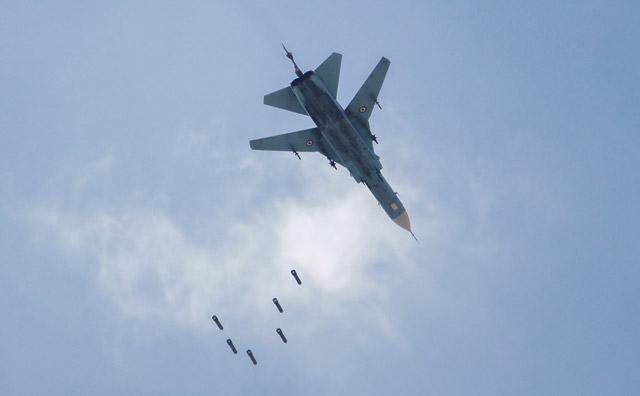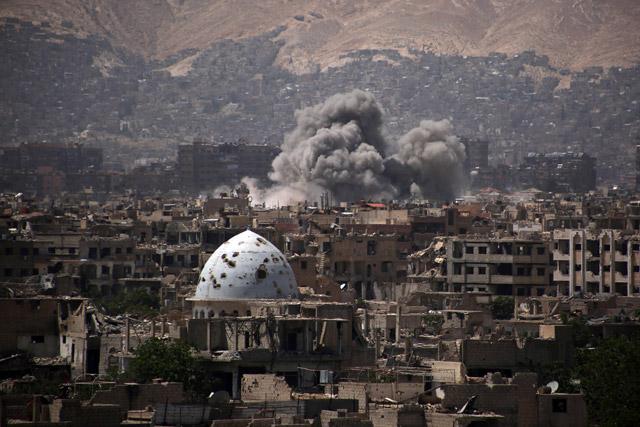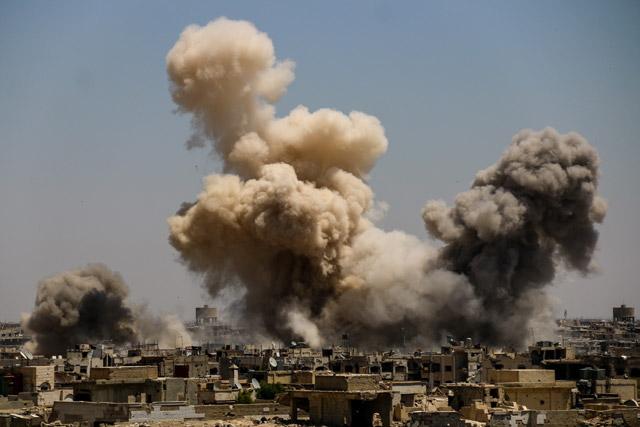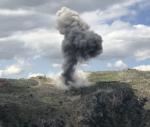You are here
Over 1,500 rebels, families evacuate devastated Damascus district
By Reuters - May 14,2017 - Last updated at May 14,2017
AMMAN — More than 1,500 rebels and their family members left the devastated district of Qaboun on the edge of the Syrian capital Damascus after more than two months of aerial strikes and artillery shelling, rebels and state media said on Sunday.
The rebels had agreed overnight to a secret evacuation deal after being cornered in a small pocket of Qaboun, which lies on the northeastern edge of Damascus. The area has been largely reduced to rubble after being struck by hundreds of aerial strikes and missiles over a period of about 80 days.
The Syrian army had resumed its intensive bombardment of the district on Wednesday after a one-day ultimatum it gave the rebels mainly drawn from the area to surrender and agree to evacuate to rebel-held areas in northern Syria.
"The regime has threatened to destroy what is left of Qaboun and will not accept anything but a military solution," Abdullah Al Qabouni from the local council of the district told Reuters.
Hundreds of rebels and their families were evacuated this week from the adjacent Barzeh district after rebels there decided to lay down their arms and leave to rebel-held Idlib province.
Syrian state media said evacuations had almost been completed and the district was now securely in army hands.
Most of the residents of the once-bustling area, which had sheltered thousands of displaced people from other parts of Syria in the course of the conflict, fled in the last two months as the bombing escalated.
Rebels under pressure
The loss of Qaboun following Barzeh is another blow to rebels as they battle to keep a foothold in the capital and face government troops who are supported by Russian air power and Iranian-backed militias.
Syrian President Bashar Assad has promoted the use of evacuation deals, along with what his government calls “reconciliation” accords, for rebel-held areas that surrender to the government as a way of reducing bloodshed.
But the United Nations has criticised both the use of siege tactics ,which precede such deals and the evacuations themselves as amounting to forcible displacement.
The Sunni Muslim rebels accuse the government of seeking to evict Sunni inhabitants in these areas in demographic changes they say would eventually pave the way for Iranian-backed Shiite who back Assad’s rule to take over their homes, a claim the authorities deny.
Army advances were made possible after tunnels between Qaboun and Barzeh were cut and the army isolated the areas from the rest of the main rebel enclave of Eastern Ghouta.
The tightening of the siege in Qaboun and Barzeh, where tens of thousands of people lived, forced the hands of rebels to eventually agree to deals worked out elsewhere that force them to pull back to northern Syria.
“They besieged us and even medicines for children or any supplies were no longer left ... and people died of hunger,” said Ahmad Khatib, who was among those who left on Friday.
The densely populated rural Eastern Ghouta district of farms and towns has been besieged since 2013. It remains the only major rebel bastion near Damascus and the fall of Qaboun and Barzeh have removed a main line of defence that protected it, rebels say.
Related Articles
BEIRUT — Fighting between Syrian rebels and government forces eased on Saturday as a Russian-led effort to shore up a ceasefire took effect,
BEIRUT — Fighting between rebel groups in the biggest insurgent stronghold near the Syrian capital Damascus entered a second day on Saturday
AMMAN — The Syrian army stepped up shelling and air strikes on the last rebel-held enclaves in the Syrian capital on Monday, its heaviest bo



















